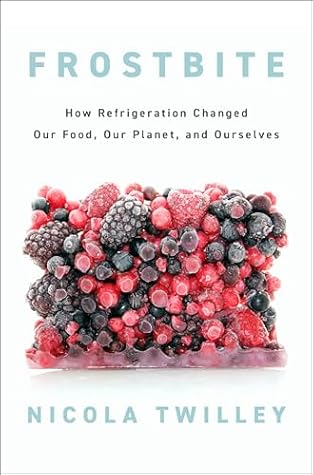More on this book
Community
Kindle Notes & Highlights
Started reading
July 1, 2024
Americold is one of the largest providers of temperature-controlled warehouse space, not only in the United States but around the world. Globally, the company maintains 1.5 billion cubic feet of cold, storing everything from ground beef destined for school lunch programs to frozen lobsters on their way to upscale restaurant chains like McCormick & Schmick’s. In Ontario, most of the 100,000-square-foot warehouse is given over to Danone products: pallet after pallet of Horizon chocolate milk, Land O’Lakes creamer, Silk soy milk, and Greek yogurt, much of which comes from a plant just forty-five
...more
The refrigerated warehouse is the missing middle in food’s journey from farm to table: a black box whose mysterious internal workings allow perishable food to conquer the constraints of both time and space. Even those chefs who are proud to know the life story of each steak they serve, or the foodies who insist on meeting the farmer who raised the meat they eat, would never dream of inquiring as to its storage history—or imagine that beef carcasses have to be electrocuted in order to withstand the rigors of refrigeration without toughening up.
The cold chain—as the network of warehouses, shipping containers, trucks, display cases, and domestic fridges that keep meat, milk, and more chilled on their journeys from farm to fork is technically known—has become such an essential part of our food system that it is taken for granted.
Judged in terms of its impact on a range of criteria, including productivity and health, refrigeration was deemed more significant than the knife, the oven, the plow, and even the millennia of selective breeding that gave us the livestock, fruits, and vegetables we recognize today. It is also a much more recent development: our ancestors learned to control fire before modern humans even evolved, but our ability to command cold at will dates back little more than 150 years.
Yet, to my surprise, no one had tried to tie those threads together into a coherent narrative—a story that could help us understand the extraordinary scope and implications of the refrigeration revolution. As I pored over my copy of the International Association of Refrigerated Warehouses’ annual directory of member facilities, I couldn’t help but wonder: Where are the Shackleton and Scott of the artificial cryosphere? Why is no one embarking on bold expeditions into its farthest-flung corners, braving its icy wastes, mapping its unexplored contours, meeting its inhabitants, and chronicling
...more
Beneath these annual rhythms, the aseasonal fulfillment of American desires continued unabated. For hour after hour, we received, stocked, restocked, and picked: frozen guava juice in barrels, destined for a Dr. Smoothie bottling plant; cans of refrigerated peanut butter paste, imported from Argentina to fill M&M’s and Clif Bars; pallets stacked with rolls of X-ray film for local hospitals; and thousands and thousands of freshly baked King’s Hawaiian buns, trucked in hot from Torrance—a thermal disruption for which Americold charges extra. “We need to bring it down slowly to keep the moisture
...more
Nicolas Appert, a talented chef with no formal education, wondered whether the method he used to put up sugared fruit in glass jars might be applied to the problem of conserving soup, vegetables, beef stew, and beans. “A dynamic and jovial little man,” according to French historian Maguelonne Toussaint-Samat, Appert began his experiments by funneling peas and boiled beef into old champagne bottles, corking them, and sitting them in hot-water baths for varying lengths of time. As curiosity became obsession, Appert sold his Parisian confectionery business and retired to a small town just outside
...more


